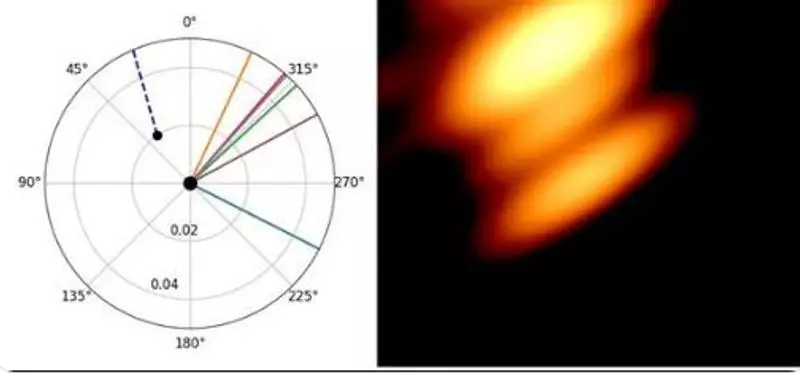
In an unprecedented astronomical breakthrough that reads like science fiction, an international team of astronomers has achieved what was once thought impossible: capturing a direct image of two supermassive black holes locked in a cosmic dance, orbiting each other in a distant galaxy.
A Cosmic First That Rewrites Astronomy Textbooks
Using a sophisticated network of radio telescopes spanning the globe, researchers have obtained the first-ever visual evidence of two black holes circling one another. This monumental discovery, published in The Astrophysical Journal, provides scientists with a living laboratory to study gravitational interactions on an unimaginable scale.
The Technical Marvel Behind the Discovery
The observation was made possible by the Very Long Baseline Interferometry (VLBI) technique, which effectively creates an Earth-sized virtual telescope with unprecedented resolution. This allowed astronomers to peer into the heart of galaxy OJ 287, located approximately 3.5 billion light-years away, where these cosmic giants reside.
Dr. Mauri Valtonen, lead researcher from the University of Turku, expressed the significance of this achievement: "We are witnessing cosmic choreography of the most extreme kind. These black holes dance to the tune of gravity itself, and now we can see their movements firsthand."
Why This Discovery Matters for Science
This historic image provides crucial insights into several fundamental areas of physics and astronomy:
- Testing Einstein's Theories: The orbital dynamics offer the perfect testing ground for general relativity under extreme gravitational conditions
- Understanding Galaxy Evolution: Reveals how supermassive black holes interact and potentially merge over cosmic timescales
- Gravitational Wave Research: Provides context for future gravitational wave detections from similar systems
- Black Hole Growth: Helps explain how black holes grow to supermassive proportions through mergers
The Future of Cosmic Observation
This discovery marks just the beginning of a new era in black hole astronomy. With upcoming observatories like the Square Kilometre Array and advanced space telescopes, scientists anticipate capturing even more detailed observations of these cosmic partnerships.
Professor Achamveedu Gopakumar from Tata Institute of Fundamental Research noted: "What we're seeing today will fundamentally change how we understand the most violent and energetic processes in our universe. This is just the opening chapter."
The international collaboration involved researchers from India, Finland, Germany, and the United States, demonstrating how global scientific cooperation continues to push the boundaries of human knowledge and reveal the hidden workings of our cosmos.





